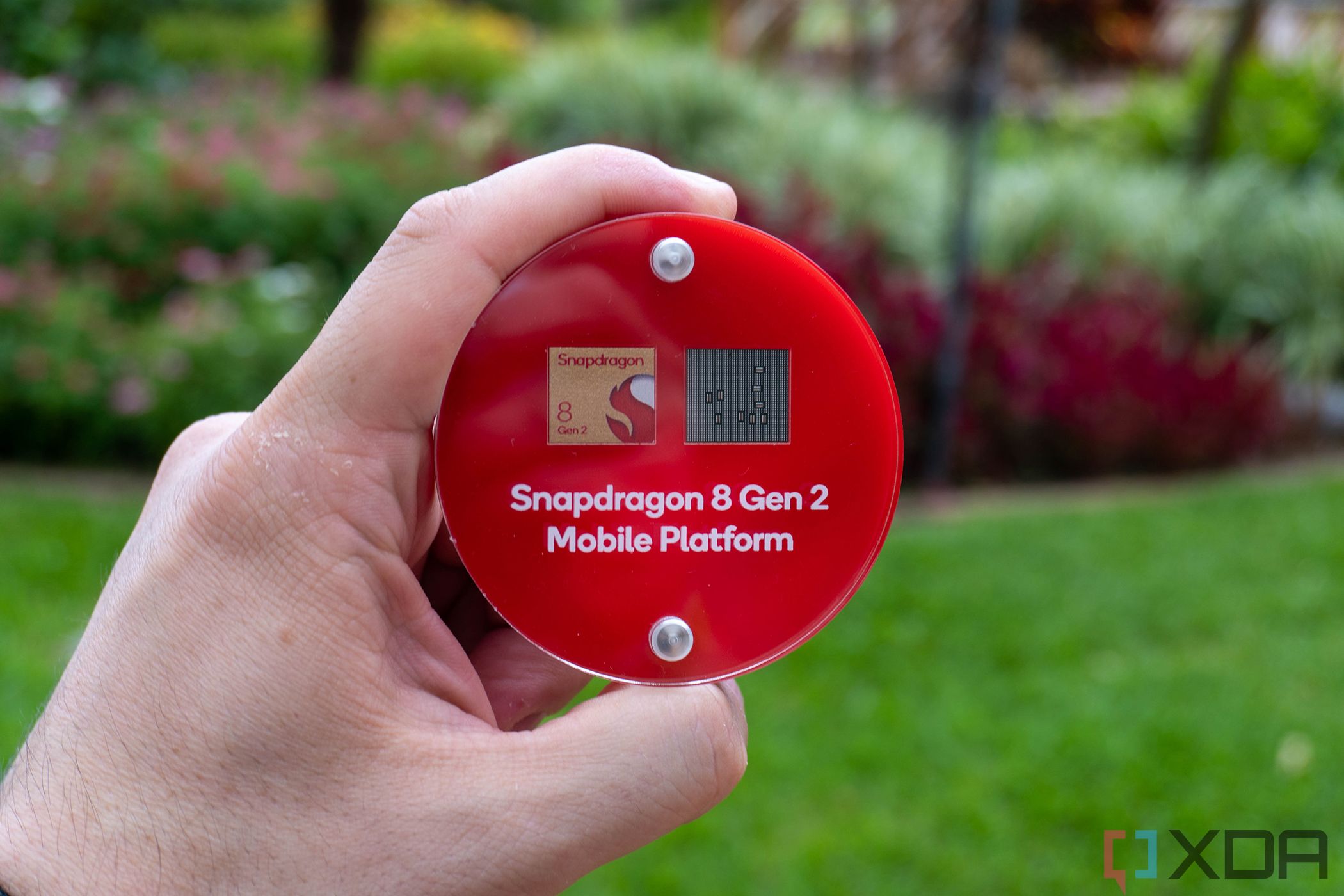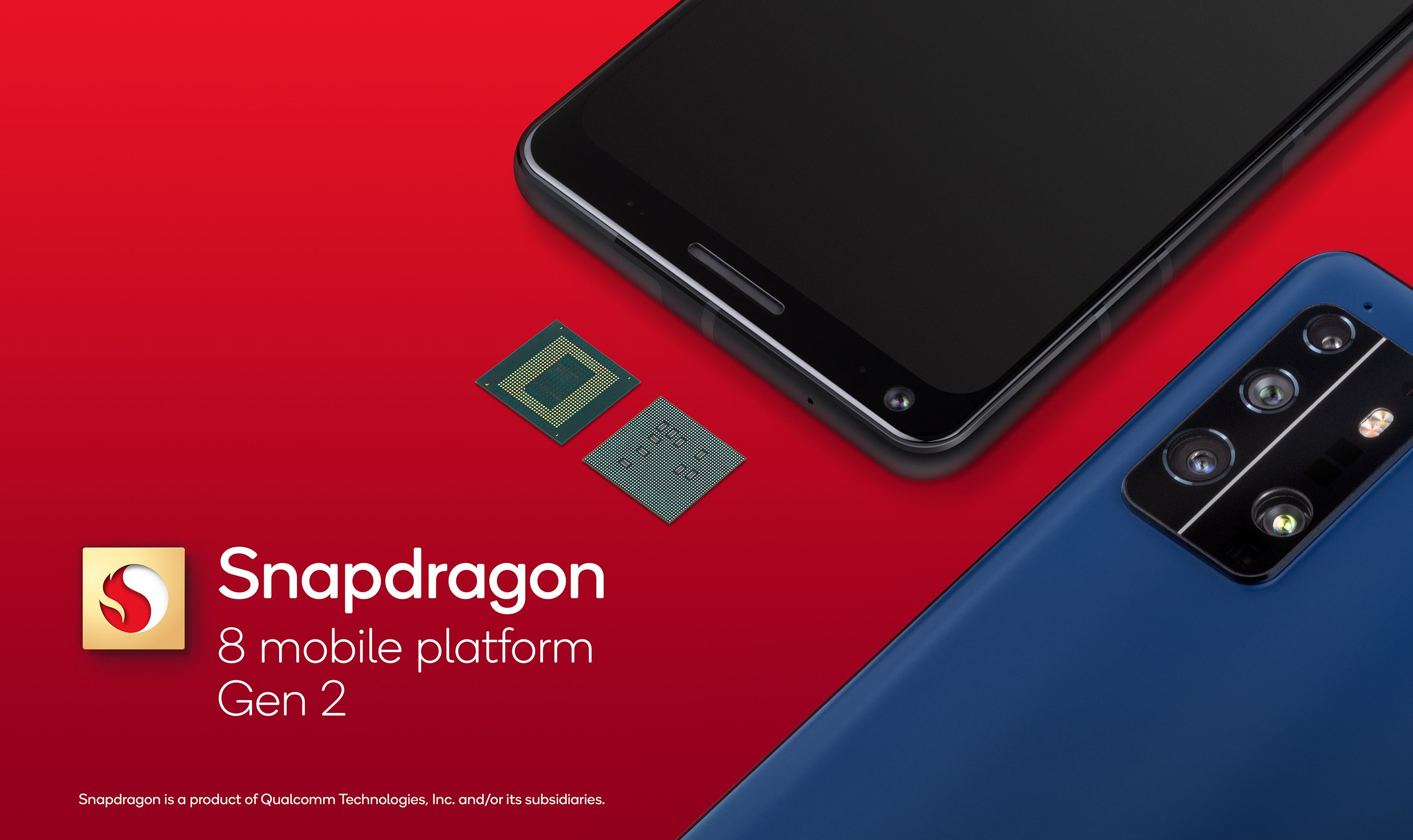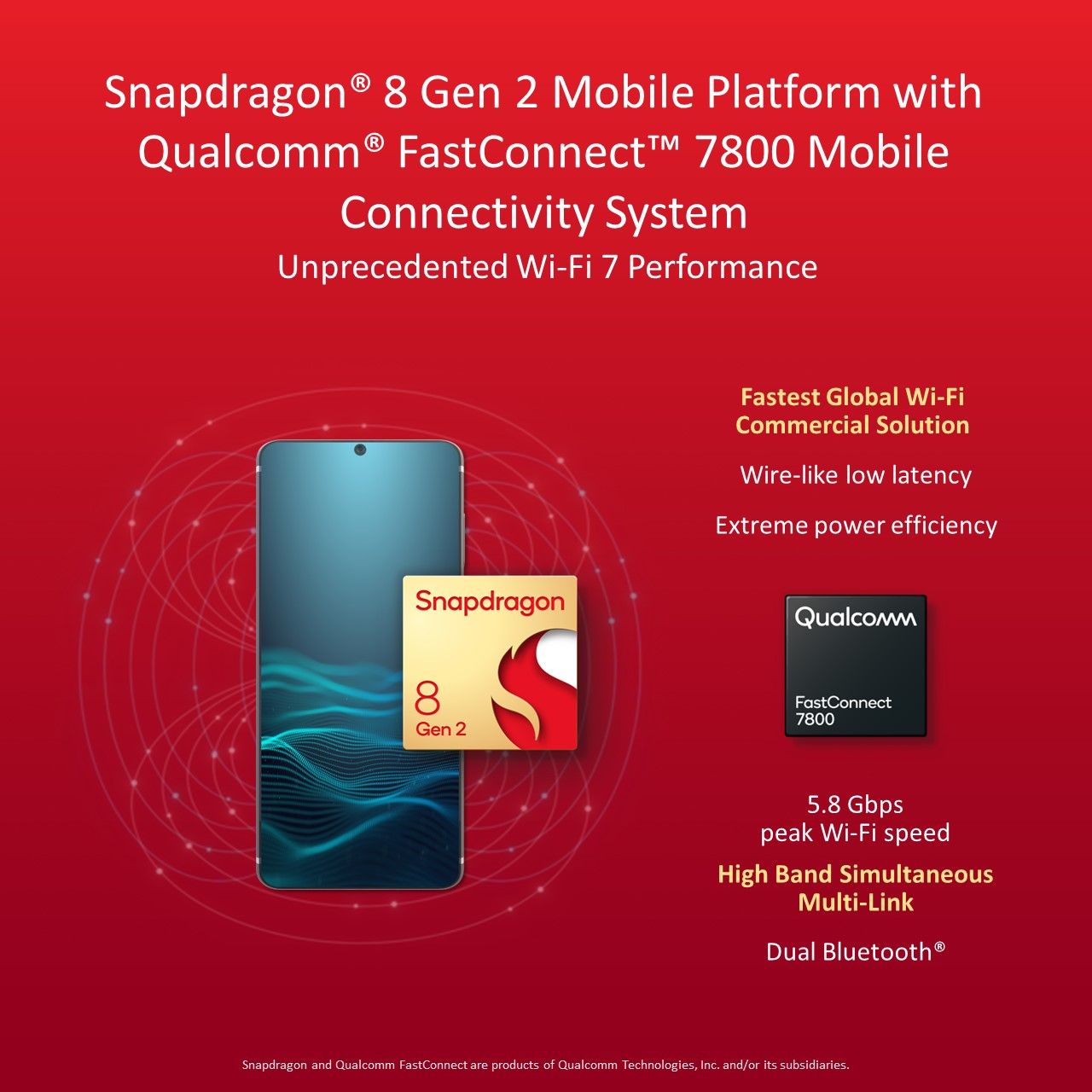Qualcomm is the biggest chipset manufacturer in the Android world, and following on from last year's Snapdragon 8 Gen 1, the company launched the Snapdragon 8 Plus Gen 1. This was one of the best mobile chipsets that we have ever tested, though came with fierce competition from the likes of MediaTek. Now, though, the company's Qualcomm Snapdragon 8 Gen 2 builds on the success of last year's Plus model, manufactured on TSMC's fabrication process and packing beefed-up cores.
However, the CPU isn't the only part that's been improved. Nearly every part of this SoC has seen a change for the better, with the new Adreno GPU sporting Vulkan 1.3, AV1 decode support, and both 25% better performance and 25% more efficiency. Hexagon Direct Link is also an interesting addition, as it serves as a direct link between all parts of the SoC and the Hexagon DSP for AI calculations, improving latency between core components that may need AI, like graphics and memory.
Qualcomm Snapdragon 8 Gen 2: Specifications
|
Qualcomm Snapdragon 8 Gen 2 (sm8550) |
|
|---|---|
|
CPU |
|
|
GPU |
|
|
Display |
|
|
AI |
|
|
Memory |
LPDDR5X @ 4200MHz, 16GB |
|
ISP |
|
|
Modem |
|
|
Charging |
Qualcomm Quick Charge 5 |
|
Connectivity |
|
|
Manufacturing Process |
4nm TSMC |
Qualcomm Snapdragon 8 Gen 2: More performance cores than ever
Qualcomm has done something particularly interesting with the Snapdragon 8 Gen 2 that we don't typically see, and that's a shake-up of the core layout. Instead of a typical 1+3+4 that we see in a lot of chipsets, Qualcomm has instead opted for 1+4+3. This means one prime core, four performance cores, and three efficiency cores.
What's even stranger about this configuration is that it's not just four performance cores that are the same; there are two A715 cores and two A710 cores. The A710 allows for AArch32, or 32-bit code execution, whereas the A715 drops 32-bit support. It's unclear if this will have any impact on efficiency, as the A715 boasts a 20% efficiency improvement over the A710 and 5% better performance.
The prime core is an Arm Cortex-X3, and it's clocked at 3.19GHz. At 3.3GHz, according to Arm, the Cortex-X3 will perform 25% faster in single-threaded operations than the Cortex-X2 at 2.9GHz. That's an architectural improvement and one that should still translate to higher performance even at a slightly lower clock speed than Arm's own testing.
Finally, the company has also included three A510R1 cores as efficiency cores. These efficiency cores are otherwise known as A510 Refresh and support AArch32 as well.
Overall, the design of this chipset is quite strange. MediaTek has opted to only use A510R1 cores for 32-bit execution, whereas the Snapdragon 8 Gen 2 uses two A715 cores and two A710 cores, presumably as well for 32-bit execution. Given that 32-bit-only applications are likely to be applications designed for older Android smartphones, it doesn't make a lot of sense to require two dedicated performance cores that basically exist only to allow for 32-bit support, especially when they come with downgrades.
While Qualcomm advertises this as a 1+4+3 system, it feels a lot more like a 1+2+2+3 system. It's worth noting that any and all efficiency and performance information that Qualcomm shared with us is as compared to the Snapdragon 8 Gen 1, and not the Snapdragon 8 Plus Gen 1. The Snapdragon 8 Plus Gen 1 improved things a lot, and I'd be curious to see how it compares to the Snapdragon 8 Gen 1.
Qualcomm Snapdragon 8 Gen 2: Minimal GPU improvements
Qualcomm didn't share a lot of GPU-related improvements, but we know that the new Adreno has 25% better performance and 45% better power efficiency. Qualcomm is likely feeling the heat from Arm's Mali GPUs which are finally beginning to gain steam, particularly when it comes to Vulkan performance. The Snapdragon 8 Gen 2 supports Vulkan 1.3, boasting a 30% improvement over last year's implementation. There is ray-tracing support available for more life-like reflections and shadows.
Finally, as well, there's AV1 support for 8K 60 FPS. Companies like YouTube and Netflix have been pushing for it for quite a while now as a successor to VP9, and with more widespread adoption in the mobile ecosystem, it's likely we'll see more services using it in the future.
Snapdragon 8 Gen 2 connectivity: Integrated Snapdragon X70 modem-RF system and FastConnect 7800
The Snapdragon 8 Gen 2 has an integrated Snapdragon X70 Modem, which was announced earlier this year at Mobile World Congress. The Qualcomm Snapdragon X70 modem packs AI features which it says can enhance 5G speeds, coverage, latency, and power efficiency for both sub-6GHz bandwidths and mmWave.
There are four key elements to the AI suite introduced in the Snapdragon X70 modem. The first is an AI-based channel-state feedback and optimization algorithm that can increase the average downlink and uplink speeds. Second of all is an AI-based mmWave beam management to increase coverage, then an AI-based network selection algorithm.
On top of that, the company also introduced FastConnect 7800, offering both low-latency Wi-Fi 7 and dual-Bluetooth connectivity support. It has up to 5.8 Gbps Wi-Fi uplink and under 2ms Wi-Fi latency.
Snapdragon 8 Gen 2 ISP: Improving the Spectra ISP with AI
Qualcomm's Spectra ISP is the heart of its image processing, and it seems that this time around, we aren't getting as big of an upgrade as in previous years. However, the company's AI improvements lend themselves to the camera in particular. That's thanks to Hexagon Direct Link, which allows different parts of the SoC (including the Spectra ISP) to interface directly with the Hexagon DSP and its neural networks. It improves both performance and latency for calculations, which in turn should lead to improved photo-taking capabilities.
As a result, Qualcomm calls this a "cognitive ISP". The ISP can receive context through a feature the company calls real-time segmentation, which allows the camera to essentially see the world in layers. Previously, this feature would have been implemented after the photo or video was taken and applied in processing, but now Qualcomm says that it can be done in real-time.
Qualcomm Snapdragon 8 Gen 2: Initial Thoughts
Qualcomm says that the first devices powered by the Snapdragon 8 Gen 2 will be here by the end of 2022. We'll be keeping an eye out on how the Snapdragon 8 Gen 2 performs when compared to the likes of the MediaTek Dimensity 9200.
Qualcomm confirmed the following companies will be launching Snapdragon 8 Gen 2-powered devices: Redmagic, Honor, ZTE, Xiaomi, Meizu, Vivo, Sony, Redmi, OPPO, nubia, Motorola, OnePlus, Sharp, Asus, and iQOO.



